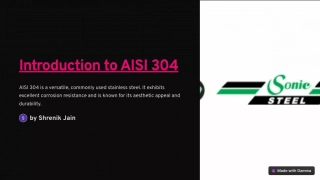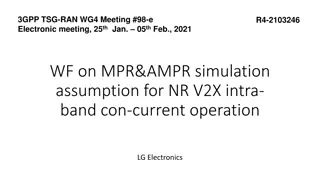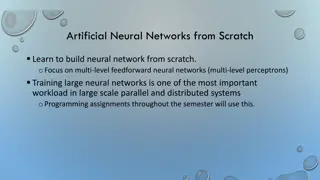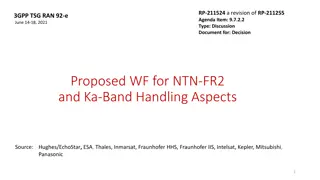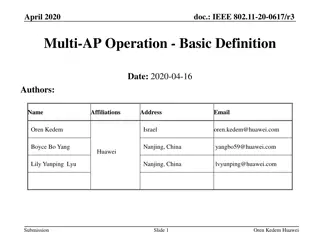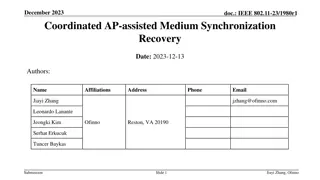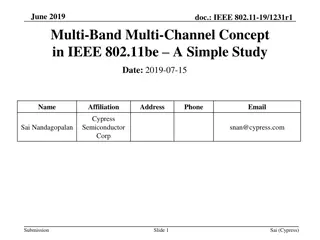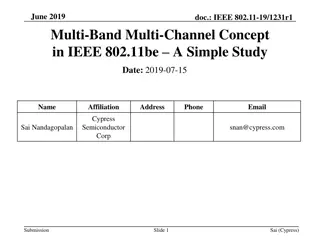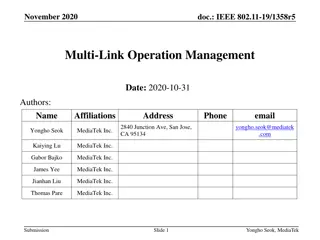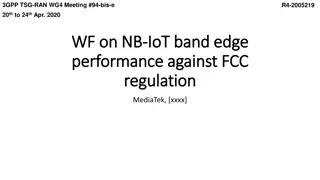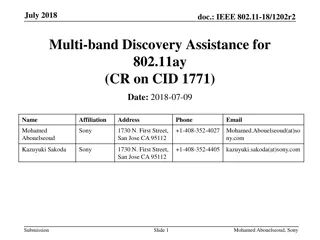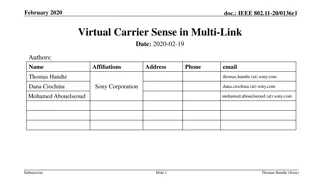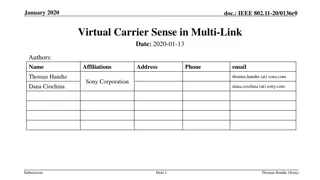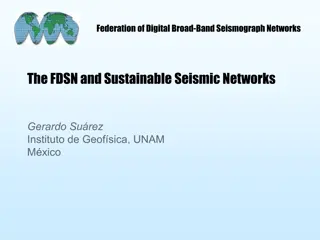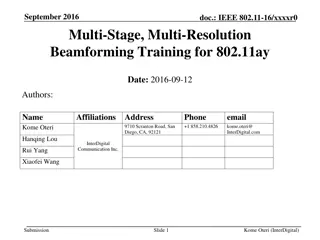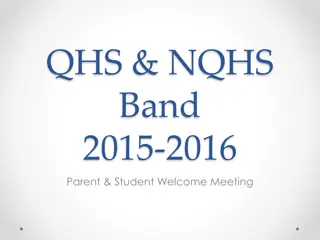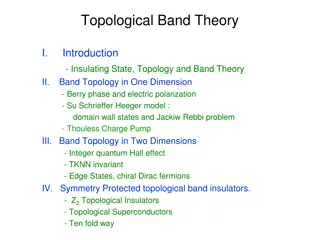
Hybrid LC and RF Networks in 802.11bb Technology
Explore the integration of hybrid RF and LC networks in the context of future 802.11bb technology. Discover the advantages, challenges, and potential solutions for achieving seamless connectivity and robust communication in diverse environments.
Download Presentation

Please find below an Image/Link to download the presentation.
The content on the website is provided AS IS for your information and personal use only. It may not be sold, licensed, or shared on other websites without obtaining consent from the author. If you encounter any issues during the download, it is possible that the publisher has removed the file from their server.
You are allowed to download the files provided on this website for personal or commercial use, subject to the condition that they are used lawfully. All files are the property of their respective owners.
The content on the website is provided AS IS for your information and personal use only. It may not be sold, licensed, or shared on other websites without obtaining consent from the author.
E N D
Presentation Transcript
September 2019 doc.: IEEE 802.11-19/1612r1 Multi-Band Operation in LC and Hybrid LC/RF Networks Date: 2019-09-18 Authors: Name Athanasios Stavridis Leif Wilhelmsson Guido Hiertz Sebastian Max Affiliations Address Ericsson Phone email athanasios.stavridis@ericsson.com leif.r.wilhelmsson@ericsson.com guido.hiertz@ericsson.com sebastian.max@ericsson.com Submission Slide 1 Athanasios Stavridis, Ericsson
September 2019 doc.: IEEE 802.11-19/1612r1 Abstract The objective of this contribution is to motivate the need and use of hybrid RF and LC network. In particular, we aim to promote the existing multi-band operation and Fast Session Transfer (FST) Setup protocol of [1] as way forward for forming hybrid LC and RF networks in the framework of the future 802.11bb. In addition, we shown that the existing multi-band operation and Fast Session Transfer (FST) Setup protocol of [1] can potentially be used in the optical bands in a straightforward way. Submission Slide 2 Athanasios Stavridis, Ericsson
September 2019 doc.: IEEE 802.11-19/1612r1 Outline Why Hybrid LC and RF Networks Way Forward in 802.11bb Multi-Band Operation Fast Session Transfer Transparent and Non-Transparent FST Example of the FST Setup Protocol Use Cases of FST in the Optical and RF Spectrum Submission Slide 3 Athanasios Stavridis, Ericsson
September 2019 doc.: IEEE 802.11-19/1612r1 Hybrid LC and RF Networks in 802.11bb Submission Slide 4 Athanasios Stavridis, Ericsson
September 2019 doc.: IEEE 802.11-19/1612r1 Why Hybrid LC and RF Networks Difficulties encountered by LC systems: Low receive SINR (poor communication) in non-favourable geometric setups of the transceiver Connectivity problems due to the physical signal blockages Solutions Optical domain (densification of the optical transmitters and receivers): Undesirable optical interference Additional backhauling Applicable only in static scenarios Hybrid LC and RF domain On-the-fly increased connectivity and communication robustness Indirect support for high mobility Coverage extension Cross-room connectivity Submission Slide 5 Athanasios Stavridis, Ericsson
September 2019 doc.: IEEE 802.11-19/1612r1 Way Forward in 802.11bb Preferences: Good technical solution Minimal standardization overhead Reuse existing 802.11 mechanisms Suggested solution from IEEE STD 802.11-2016 [1]: Multi-band operation and the Fast Session Transfer Mechanism (FST) FST is introduced in IEEE STD 802.11-2016 Mainly motivated by the needs of 802.11ad (60 GHz) Accommodation of the growing trend of multiband devices (different flavours of 802.11 in different frequency bands) Efficient utilization of the available spectrum (both RF and LC) Submission Slide 6 Athanasios Stavridis, Ericsson
September 2019 doc.: IEEE 802.11-19/1612r1 Multi-Band Operation Based on IEEE STD 802.11-2016 [3], a multi-band capable device is able to: Manage operation over more than one band in a simultaneous or non- simultaneous way. support multiple MAC sublayers. Multi-band procedures enable two multi-band capable devices to: Discover Synchronize (de) Authenticate (re) Associate Disassociate Manage resources with each other in any common band Submission Slide 7 Athanasios Stavridis, Ericsson
September 2019 doc.: IEEE 802.11-19/1612r1 Fast Session Transfer A session, in the context of FST, refers to the non-PHY state information that is stored in the two communicating STAs and is available before and after a session transition. The FST session transition is managed by the FST session setup protocol. FST session setup protocol: A multi-band device participates either as a initiator or as a responder. Includes fours states and rules how to move from one state to another States: Initial (the FST session is in operational in one or both bands) Setup Complete (initiator and responder are ready to change their current bands) Transition Done (initiator and responder are enabled to operate in the other band if the LLT field is 0) Transition Confirmed (initiator and responder ) More details about the previous four states can be found in [1, Section 11.33.2] * Link Loss Timeout (LLT) field is a field in the FST Setup Request frame format Submission Slide 8 Athanasios Stavridis, Ericsson
September 2019 doc.: IEEE 802.11-19/1612r1 Transparent FST [1, Section 4.9.4]: Reference model for a multiband capable device and transparent FST. The layers above 802.11 are not participating in the multi-band operation Submission Slide 9 Athanasios Stavridis, Ericsson
September 2019 doc.: IEEE 802.11-19/1612r1 Non-Transparent FST [1, Section 4.9.4]: Reference model for a multiband capable device and non-transparent FST The layers above 802.11 are involved of the multi-band operation Submission Slide 10 Athanasios Stavridis, Ericsson
September 2019 doc.: IEEE 802.11-19/1612r1 An Example of the FST Setup Protocol New band Old band Source: [1] Submission Slide 11 Athanasios Stavridis, Ericsson
September 2019 doc.: IEEE 802.11-19/1612r1 FST Setup Protocol Between LC Bands : LC bands Source: [1] Submission Slide 12 Athanasios Stavridis, Ericsson
September 2019 doc.: IEEE 802.11-19/1612r1 FST Setup Protocol Between RF Bands : RF bands Source: [1] Submission Slide 13 Athanasios Stavridis, Ericsson
September 2019 doc.: IEEE 802.11-19/1612r1 FST Setup Protocol Between RF and LC Bands : LC bands : RF bands Source: [1] Submission Slide 14 Athanasios Stavridis, Ericsson
September 2019 doc.: IEEE 802.11-19/1612r1 FST Setup Protocol Between LC and RF Bands : LC bands : RF bands Source: [1] Submission Slide 15 Athanasios Stavridis, Ericsson
September 2019 Use Cases of FST in the Optical and RF Spectrum Concurrent use of RF bands Concurrent use of LC bands Concurrent use of LC and RF bands Switch from a LC band to another LC band Switch from an RF band to a LC band Switch from a LC band to an RF band Switch from an RF band to an RF band A switch from an old band to a new band is not possible using the FST mechanism if there is: a communication loss in the old band during the FST Setup phase a communication loss in the new band during the FST Ack phase Solution: follow the same approach as AD or AY. doc.: IEEE 802.11-19/1612r1 : Not of current interest There is no need for the FST Setup protocol to be implemented by the non multi-band capable devices. Submission Slide 16 Athanasios Stavridis, Ericsson
September 2019 doc.: IEEE 802.11-19/1612r1 Straw Poll Should the 802.11bb amendment support multi-band operation between any band in the optical and sub-72 GHz RF spectrum? Y/N/A: -/-/- Submission Slide 17 Athanasios Stavridis, Ericsson
September 2019 doc.: IEEE 802.11-19/1612r1 Motion Instruct the editor to add the following sentence to the IEEE 802.11bb draft: X.Y.Z Light Communication (LC) STA The main MAC features in a 802.11bb STA are the following: Mandatory support for fast session transfer (FST) in the multi-band capable devices supporting light and other sub-72 GHz RF bands Move: Second: Y/N/A: -/-/- Submission Slide 18 Athanasios Stavridis, Ericsson
September 2018 doc.: IEEE 802.11-19/1612r1 References [1] IEEE Standard for Information technology--Telecommunications and information exchange between systems Local and metropolitan area networks-- Specific requirements - Part 11: Wireless LAN Medium Access Control (MAC) and Physical Layer (PHY) Specifications," in IEEE Std 802.11-2016 (Revision of IEEE Std 802.11-2012) , vol., no., pp.1-3534, 14 Dec. 2016. Submission Slide 19 Athanasios Stavridis, Ericsson

